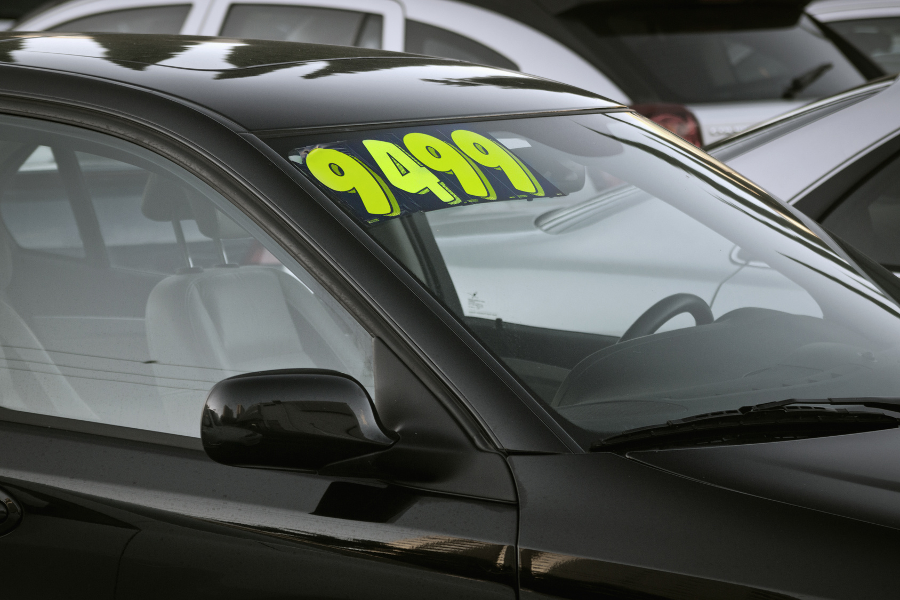Is it time to sell your old car or truck
Post on: 16 Март, 2015 No Comment

By: Margarette Burnette, May 09th 2014
Each year you drive your old car is one more year you don’t have to worry about paying for a new one.
Yet, with every turn of the odometer, you’re one mile closer to big repair and maintenance bills.
At some point, it costs so much to keep your old ride on the road that you’d be better off investing all of the money you’re spending at the garage on a new car or truck. Our database of the best auto loan rates can help get you started.
There’s no magical mileage threshold that tells you when it’s time to ditch your car. In fact, many of today’s vehicles routinely exceed 100,000 miles without experiencing major mechanical problems.
But if you’re being hit with one repair bill after another, these 5 steps can help you decide if the time has come to ditch your old car or truck.
Step 1. Find out what your car is worth.
All smart decision-making starts with this.
To find out what your car is worth, research it on an auto valuation site, such as Edmunds.com or Kelley Blue Book (kbb.com).
You’ll be asked a few questions about the year, make and model of your car, the odometer reading and the condition it’s in, taking any repairs you’re planning to make into account.
Those websites will provide you with three potential values for your car.
The one you want to use is the trade-in value, which is the lowest of the three estimates.
This is the amount you can expect to receive from a dealer if you include your current car in a deal to buy another car there.
Let one of the best commuting cars of 2014 take the stress and worry out of those slogs to work, the supermarket and other daily destinations. They’re safe and economical but don’t scrimp on creature comforts, including automatic transmissions and air-conditioning. With prices starting at just over $19,000 and climbing to just under $31,000, we’re confident you’ll find the perfect ride.
Step 2. Determine how much it will cost to keep it on the road.
Ask your mechanic for a rundown of all the:
- Big repairs that must be done right now to keep your vehicle running.
- Additional repairs that can be postponed but need to be done over the next year.
- Major maintenance that will come due during the next 12 months based on how many miles are on the car.

We’re not talking about oil changes.
We’re talking about the more costly work required as vehicles reach 60,000 to 100,000 miles — everything from changing the transmission fluid and coolant to replacing worn-out tires, brake pads and rotors, water pumps, suspension parts and timing belts.
Check your owner’s manual for the manufacturer’s recommended maintenance schedule. If you don’t have the manual, any reputable shop can check the schedule for your car and tell you exactly what you’ll need to do and how much those repairs will cost.
Postpone that work, and you’ll run a greater risk that your car will break down and stick you with an even bigger repair bill once you’ve been towed to the shop.
Take the timing belt, for example. It connects the crankshaft to the camshaft and controls the opening and closing of the valves in your engine.
Replacing a timing belt often costs $600 or more. But if you don’t do it, you can pretty much count on a worn-out timing belt breaking at some point, seriously damaging your engine.
Then it would cost $2,000 or more to get it running again.
Also, watch for two signs of big trouble:
- Blue smoke out the tailpipe means you’re burning oil, which very likely indicates the oncoming need for an engine replacement. (A little white smoke until the engine warms up is OK.)
- Slipping between gear changes means your automatic transmission is failing. (Slipping is where the engine revs up without any appreciable increase in speed.)
Add up all of the repairs and maintenance you’ll need to do over the next year, and compare it to the trade-in value of your car.
If you’ll have to spend more than the car is worth to keep it on the road for another year, then it makes financial sense to invest that money in a new ride.
Step 4. Recalculate your costs using past repair bills.
You aren’t finished if that comparison falls on the side of keeping your old car, especially if it’s not a decisive difference.
Mechanics can’t look at your car and predict everything that’s likely to break over the next year, so maybe you didn’t have a list of estimated future repairs in Step 2.
That doesn’t mean you’re not going to have any.
Reliability guides, such as the ones from Consumer Reports. provide entire lists of problems that consistently plague almost every make and model as it ages.
In fact, here’s a pretty tried-and-true rule of car ownership: The older your car gets, the more stuff breaks.
Average cost of car loans
Source: Interest.com weekly survey of major lenders from April 30, 2014.














